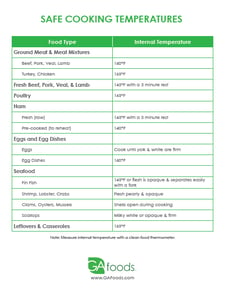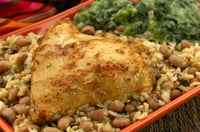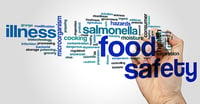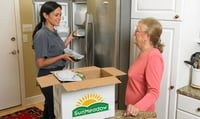Even though the United States has one of the safest food supplies in the world, it is still exposed to environmental hazards. Education and training are among the most important aspects in preventing foodborne illness.
Foodborne illness can attack anyone, especially pregnant women, young children, older adults and people with weakened immune systems. This illness can be quite mild in some cases, but in others it can lead to serious health complications, or even death. Per the Center for Disease Control and Prevention (CDC), approximately 48 million people get sick, 128,000 are hospitalized, and 3,000 die of foodborne diseases every year.
These safe food-handling practices will keep you and your family free from foodborne illness:
Keep it Clean!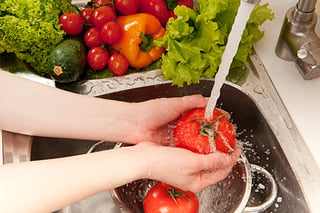
Bacteria can be found anywhere and can spread fast, producing many diseases, including foodborne illness.
- Always wash your hands with soap and warm water for at least 20 seconds before food preparation, after handling raw meats, fish, or poultry, before eating, after using the bathroom, changing diapers, and handling pets.
- Bacteria can be spread on all surfaces and utensils, cutting boards, sponges and countertops. Wash with hot, soapy water and thoroughly rinse. Allow to air dry to prevent re-contaminating the surfaces with a dirty towel. For utensils that have direct contact with raw meats, like knives or cutting boards, sanitize them or wash in a dishwasher.
- Don’t forget to rinse fresh fruits and vegetables under running tap water before eating. Clean the lids of canned goods before opening.
Separate Foods
Cross-contamination is the physical transfer of harmful bacteria from one person, object or place to another. This is especially true when handling raw meats, poultry, and seafood. It’s important to keep meats and their juices in a separate area from ready-to-eat foods and fresh produce at all times:
- Separate foods when shopping, storing, preparing, and serving.
- Keep all the areas clean when preparing food. Use a clean cutting board and knife.
- Marinate food in the refrigerator, not on the counter. If using the marinade as a sauce, boil just before using.
Cook to the Proper Temperature
To ensure food is safe to eat and free of harmful bacteria, it is necessary to cook the food until it reaches a high enough internal temperature. This is especially true when preparing raw meat, poultry, seafood or eggs. Color is not a reliable indicator of doneness. The best way to assure food is ready, is by using a clean thermometer to verify the internal temperature. Click here to download our Safe Cooking Temperature Chart for appropriate temperatures.
Keep it Cool!
Keep the refrigerator temperature at 40ºF or below and the freezer temperature at 0ºF or below. The most important thing to remember is all cooked foods should cool to 41ºF or colder in a maximum of 6 hours. (Reduce the temperature to 70ºF within two hours of preparation and from 70ºF to 41ºF or colder within the additional four hour period). When you prepare and cook food ahead, divide large portions into small, shallow containers and refrigerate, this will ensure rapid safe cooling.
As you can see, properly handling food can help save many lives! It is in your hands to protect yourself, your family, and others from foodborne illness. Remember to follow these basic four steps: Clean, Separate, Cook and Cool. And don’t forget the most important of all: always prepare food with love!

